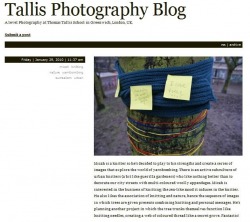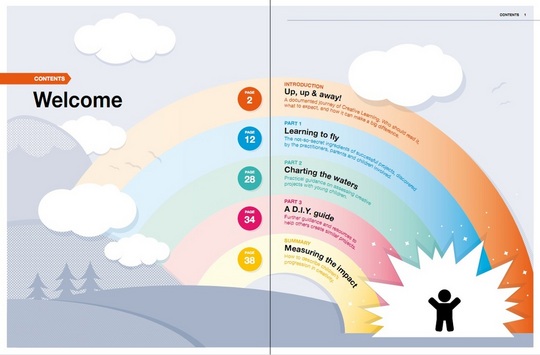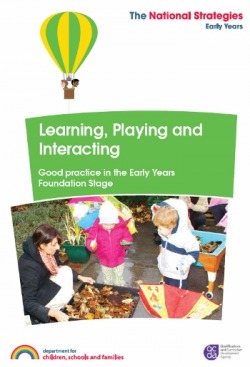 This year I'll be working as a trainer for schools in the North West applying to the new Artsmark scheme. Arts Council England have selected and trained a group of arts education specialists across the country to offer training to teachers, to help them with applications for the revised Artsmark scheme.
This training is authorised and endorsed by them, and is relevant to primary and secondary schools applying at Artsmark or Artsmark gold level* including all schools regardless of whether or not they have applied for or received the award before. (*Artsmark Silver does not exist within the new scheme). Save the date: Merseyside: Monday 17th October at the Bluecoat Centre, Liverpool Pennine Lancs: Tuesday 1st November at Burnley Youth Theatre, Lancs NB This will be the only Arts Council England authorised Artsmark training in these areas. Booking details will be announced shortly but do save the date now. Please contact me if you wish to reserve your place so you can begin arranging cover. Training will be at a fee of £80 / teacher for a full day including lunch, introduction to the arts education work of the host venue, and individually tailored support for your application. Full terms and conditions will be available online soon. Please don't hesitate to contact me with any questions. Find out more about Artsmark here. (To contact the Artsmark team, please find the appropriate contact details within the application documents.)
3 Comments
1/5/2011 One Small Step for Early Years, One Giant Leap for Children: a toolkit for creativity with young childrenRead NowThis time last year I was lucky enough to work with Isaacs UK and CAPE UK, exploring the work of artists and creative practitioners working with children and staff in ten early years settings across Leeds. They settings worked together as network, using Creative Partnerships' enquiry model of working to test out their activities. My role was to pull together everyone's learning, summarising shared findings and exceptional experiences, laying these out in a way which might be helpful for others looking for new and / or creative ways to unlock potential in their children. To round up a few of the ups and downs, things that worked, things that didn't work quite so much, and some of the thinking the creative and early years practitioners travelled through together or separately. At the heart of it all, to tell some of the stories of the children and how their outlook on the world changed a little as a result of the projects. On a more formal side, we looked at a couple of different ways of monitoring the progress of children - both in terms of the Foundation Stage areas, and in their wellbeing and involvement through a system known as EXE (Experiential Education). CAPE set some fantastic designers loose on the content I wrote with IsaacsUK, and the result is a really stunning and accessible looking publication. Please read, browse, enjoy and most importantly - pass it on to anyone who might make use of it. Browse or download it below, or online *here* I'm endlessly fascinated by the way any object, let alone a museum collection, can become some personal to people and interpreted so subjectively. We bring to things that which we already know. It's only possible to see and understand the object the way you alone can see and understand it. With that in mind I was fascinated to watch this short film of how some students of Manchester Metropolitan University worked with a collection of random domestic objects from Victorian times. These were items from the Mary Greg Collection at Manchester Art Gallery. I also recommend you visit the blog for this research and interpretation project. You need know nothing about Mary, her collection, the university or the art gallery in advance. Just enjoy what you find at the blog. I suspect it will reel you in just as it has me. Enjoy this short film (made by Asta Films) There are some things I've thought it would be good to do for a long time, but it's never been part of my paid work to do them, and so they haven't got done. I'm noting them here as a reminder to myself and an invitation to anyone who is interested, to commission me to do them, and share them freely and publicly (or at least under creative commons) for the wider benefit of those who can use them:
1. A list of what managing, researching and evaluating many projects has taught me about partnership - what it does or doesn't mean, what it looks like, the different shapes it takes, the benefits, challenges, pitfalls, successes, opportunities and more 2. A top ten of findings / recommendations that arise in my evaluation work. Mostly around the process of managing projects - resources, processes, staffing, communication, planning, sustainability and legacy - those sorts of things. There are so many shared benefits and challenges I see time and time again, to the point it makes me sad that these things have to be learned afresh each time with publicly funded activity. Wouldn't it be better if we can do more learning from each other and move things on? 3. A portfolio of what creative consultation / creative evaluation can look like - examples of things I've tried myself and examples that other people have developed in their work. There might be more to this list of lists but these are the freshest in my mind just now. So if you can't afford a specialist consultant for these things, do keep popping back, maybe one day someone will have commissioned them from me and they will be available to you for free. About four years ago I was asked to work as cultural and educational consultant for a Culture Online funded pilot project called MyArtSpace. We worked with three venues - Urbis in Manchester, The Study Gallery, now KUBE, in Poole and the D-Day Museum in Portsmouth. MyArtSpace was one of the early systems for interpreting and sharing collections and exhibitions digitally using mobile phones. Organisations listed exhibits or artefacts on a database, along with images and interesting facts. These were then transferred to a system which visitors could access via specially programmed mobile phones.
As visitors encountered an object showing a code around the venue or site, they entered the code into the phone, which brought up a corresponding image and information. Visitors could then take a photo, record sounds, and add additonal notes, thoughts, facts etc to this object's 'record.' This was then saved to a personalised storeroom belonging just to that one visitor, which they accessed on the internet later on. Through their collection in this on line storeroom they could then select, order, and present items to create unique exhibitions; then share them with other users through the MyArtSpace website. After the pilot phase, MyArtSpace became OOKL as we realised the potential for the service expanded way beyond just art, and we didn't want to restrict usage. Museums, botanic gardens and a wide range of other spaces and places began to come on board. Now, with leaps and bounds of advances in digital technology and a web revolution, the power of OOKL has stepped up to gears previously incomprehensible. January saw an i-phone app launched which has opened up access to the service and its thousands of objects. More than three venues per week are now signing up to use OOKL. If you want to find out more about using OOKL as a venue or a visitor, read on...  "Micah is a knitter" That was about all we knew from the tweet on creativetallis twitter stream but it was enough to hook me. CreativeTallis is a part of one extraordinary school's social media activity I've been following for some time now. Most schools now have something called a Virtual Learning Environment. It's a bit like an intranet but with some real web functions like blogging and podcasting. Personally I don't quite understand their purpose. If you want young people to experience the potential of broadcasting and publishing their work 'out there' then in my view the internet is the better way to do it. I appreciate schools have a responsbility for safety, which means many still sit behind resilient local authority firewalls with not much of the real world getting in or out. But if young people are going to access the web anyway in their own time, and they are, is it not more responsbile to help them understand how to do that safely, rather than pretend the world wide web isn't really there? And so CreativeTallis (actually Thomas Tallis school in London) is a leader in this approach for schools in my view. They present a range of websites, blogs, twitter streams, webcasts and more. In the past I've watched them create a 3D city-scape thorugh a live webcast, and been able via twitter, to ask them questions about what they were doing and why, and have students reply to my questions in real time. Through this kind of innovative approach, the school is able to demonstrate how students learn with a passion and excitement, stimulating curiosity and sharing, celebrating and exploring individuality. Importantly students are encouraged to help steer and develop their own learning, and have the know-how to recognise and reflect on their experiences. And so it is I knew that unusually, Micah is a knitter, would be the starting point to find out more about one student's experience of education. Micah is also a person, an individual, and knows how to celebrate that thanks to the realistic, practical, relevant, yet utterly 'out-there' work of his school. The DCSF recently released this guide to learning, playing and interacting in Early Years.
It's my belief that a huge amount of good practice in early years learning and development can be transfered to older age ranges and indeed other non-education work. The general premise of creative exploration as a means to find out and enjoy all the opportunities that are out there must be a effective approach for anybody. Jo Graham of Learning Unlimited, who has significant experience of working with early years development particularly in the South of England, and especially with museums, talks more about the values of the publication and how mow museums staff might use it in their thinking and planning... 4/12/2009 ICT / Digital Media Creative Practitioner wanted for cultural story telling primary school projectRead NowThe final project I'm publishing recruitment details for. A city centre Manchester school are looking for an inspiring creative practitioner to help them get to grips with ICT and new media through story telling of some of the many cultures present in their children's lives. Full details available to download below. Deadline: Monday 14th December
2/12/2009 Creative Practitioner wanted for transfering early years / child-led learning approach to a year 3 classroom.Read NowAnother creative practitioner is required, this time for a primary school in Wilmslow, Cheshire, who want to take some of the best practice of early years activity and find appropriate ways to transfer this to their year 3 (age 7) class. We're anticipating this person might be an early years creativity / early arts specialist who can trial how this approach might work in a classroom with older children; or a creative pedagog who is able to bring expertise of child-led learning to creative curriculum exploration in the classroom. Full details available to download below. Deadline: Fri 11th December
As part of a project I'm overseeing in North Manchester / Rochdale, the school I'm working with is looking to recruit a creative practioner who can explore sensory creativity with primary aged special needs and mainstream children. We're particularly interested in finding someone who can include visual art / design / craft in the work, and possibly include the school's outdoor spaces, potentially developing temporary additions to these spaces. Full details available to download below. Deadline for applications: Friday 11th December
|
Details
...BlogI'm most interested in how the public, your public, whoever that may be, engages with culture and creativity.
And if it nurtures creativity and develops personal, social or professional skills I'm absolutely all ears. Categories
All
Archives
May 2023
|
||||||||||||||||||





 RSS Feed
RSS Feed
